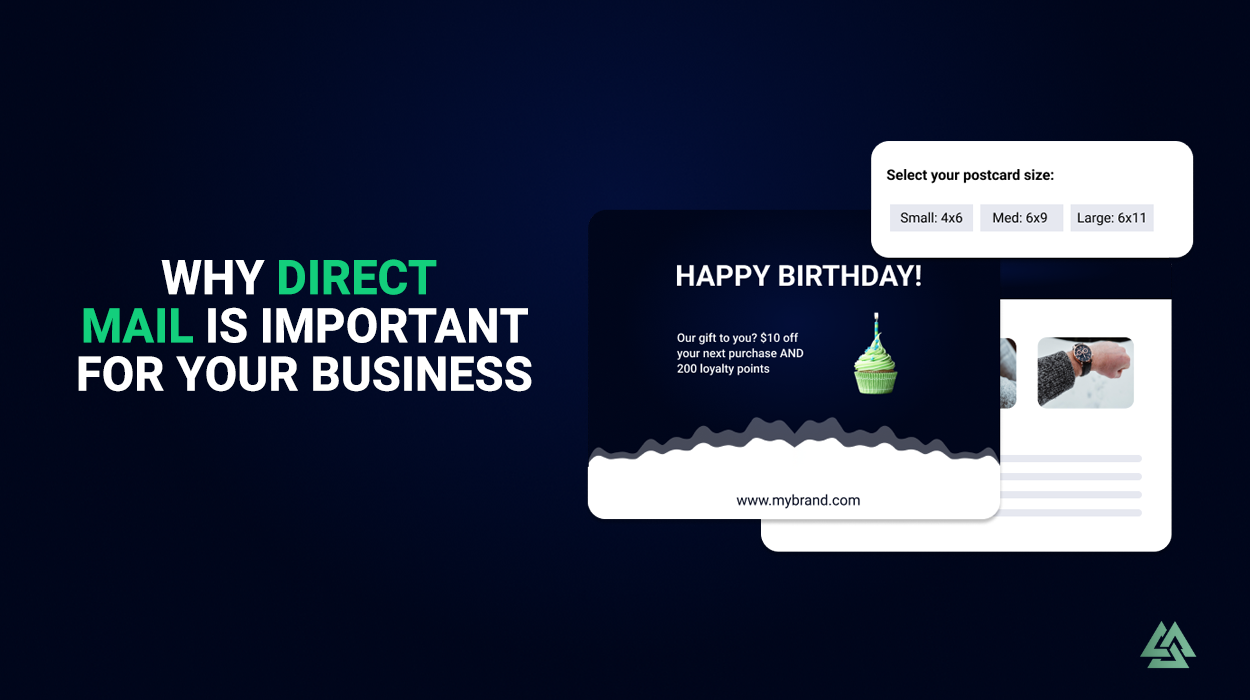Digital marketing for highly regulated markets is challenging. In addition to the different laws and regulations in each state and/or country, each online platform has its own set of rules.
This can be highly restricting, and it would mean that businesses must tread carefully to ensure that all their marketing initiatives are legal and effective at the same time.
This is where direct mail comes in.
What Is Direct Mail?
Direct mail is the term for traditional mail delivered by postal services. In contrast, email refers to electronic messages sent via the Internet.
Businesses can use many different forms of direct mail for their marketing. Some of these include:
- Brochures: These are usually printed on high-quality paper and contain information about the products, services, and discounts.
- Catalogs: Like brochures, catalogs also contain information about the products and services. They are usually larger in size and contain more detailed information than brochures.
- Coupon envelopes: These are envelopes that contain coupons for products and services.
- Flyers: These are single-page prints that often contain information about promotions and discounts.
- Newsletters: Newsletters are usually mailed out monthly or quarterly. They contain informative articles about the products, and the industry in general.
- Postcards: Postcards are usually smaller in size than flyers and are great for announcing new products, services, or discounts.
- Packages: Businesses can also send out packages that contain branded gifts on special occasions. But there is a word of caution for this type of direct mail, which we will discuss in detail in the next section.
Direct Mail and Highly Regulated Markets
While direct mail may seem like a thing of the past in this digital age, it is actually still an effective marketing tool — especially for highly regulated markets:
- It has high response rates: The response rate for direct mail is 5.3%, which is saying a lot in today’s modern times.
- It strengthens sales: A United States Postal Service (USPS) study found that consumers who receive regular catalogs from their mail purchased 28% more than those who don’t.
- It offers high ROI: The median return on investment for direct mail is 29%, which is not far off from social media marketing ROI (30%).
- People actually prefer it: Last but not least, a study found that 73% of customers prefer receiving direct mail and that 59% report enjoying reading mail the traditional way. What’s more interesting is that this statistic also applies to younger consumers.
Direct-mail marketing has risks and benefits. It’s important to check your state and local laws regarding direct mail, as Alpine IQ cannot be responsible.
Five Advantages
Here are some of the most notable advantages of using direct mail:
1. Puts more eyes on your marketing efforts
Unlike email or social media ads, which can be easily ignored, direct mail is physical and demands attention. People have to open it to see what’s inside, and this action already allows you to deliver your message.
Your direct mail becomes all the more effective if you use an aesthetically pleasing and engaging design coupled with persuasive copy.
2. It can widen your reach
Direct mail can reach people who may not have access to the Internet or social media. This is especially beneficial if you’re targeting an older demographic.
Additionally, direct mail can complement your existing digital marketing strategies. You can use it to drive traffic to your website or social media platforms, further widening your reach.
3. It’s creative and more personal
Nowadays, people are bombarded with so many marketing messages that they’ve become numb to most of them. This is why it’s important to find ways to be more creative and personal with your marketing efforts, and direct mail definitely fits the bill.
You can be as creative as you want with your direct mail — from the design to the copy to the actual contents. You can also get more personal by including a handwritten note or a small gift. These little touches can go a long way in making your business stand out from the rest.
4. It has less competition
Scarcity has benefits, especially in highly regulated markets. Because few retailers and brands use direct mail for marketing, those that do stand out more. This can work to your advantage as you try to gain a larger market share.
Similarly, this also means that direct mail is more memorable than other marketing messages people receive — it’s tactile and people can hold on to it for a longer period.
5. It’s a more cost-effective marketing solution
While direct mail may require a higher initial investment than other marketing methods, it actually has a lower cost per response.
We also mentioned earlier that direct mail has a high ROI, which is only a point lesser than social media — the marketing medium with the second-highest ROI.
Improve Your Strategy
Overall, direct mail is a great marketing tool — it’s personal, creative, and cost-effective. Just be sure to follow the legalities surrounding direct mailers in your area.
If you want to make the most out of your direct mail strategy, consider working with Alpine IQ, which specializes in this type of marketing. We can help you develop an effective campaign that targets your ideal customers and enables you to achieve your business goals.
At Alpine IQ, we offer a wide suite of AI-powered marketing tools that are specially geared towards your industry — including direct mail marketing.
If you’re ready to grow your brand, contact us at https://alpineiq.com/ to get started!
To get the latest updates on our suite of services, make sure to subscribe to our blog today!



































